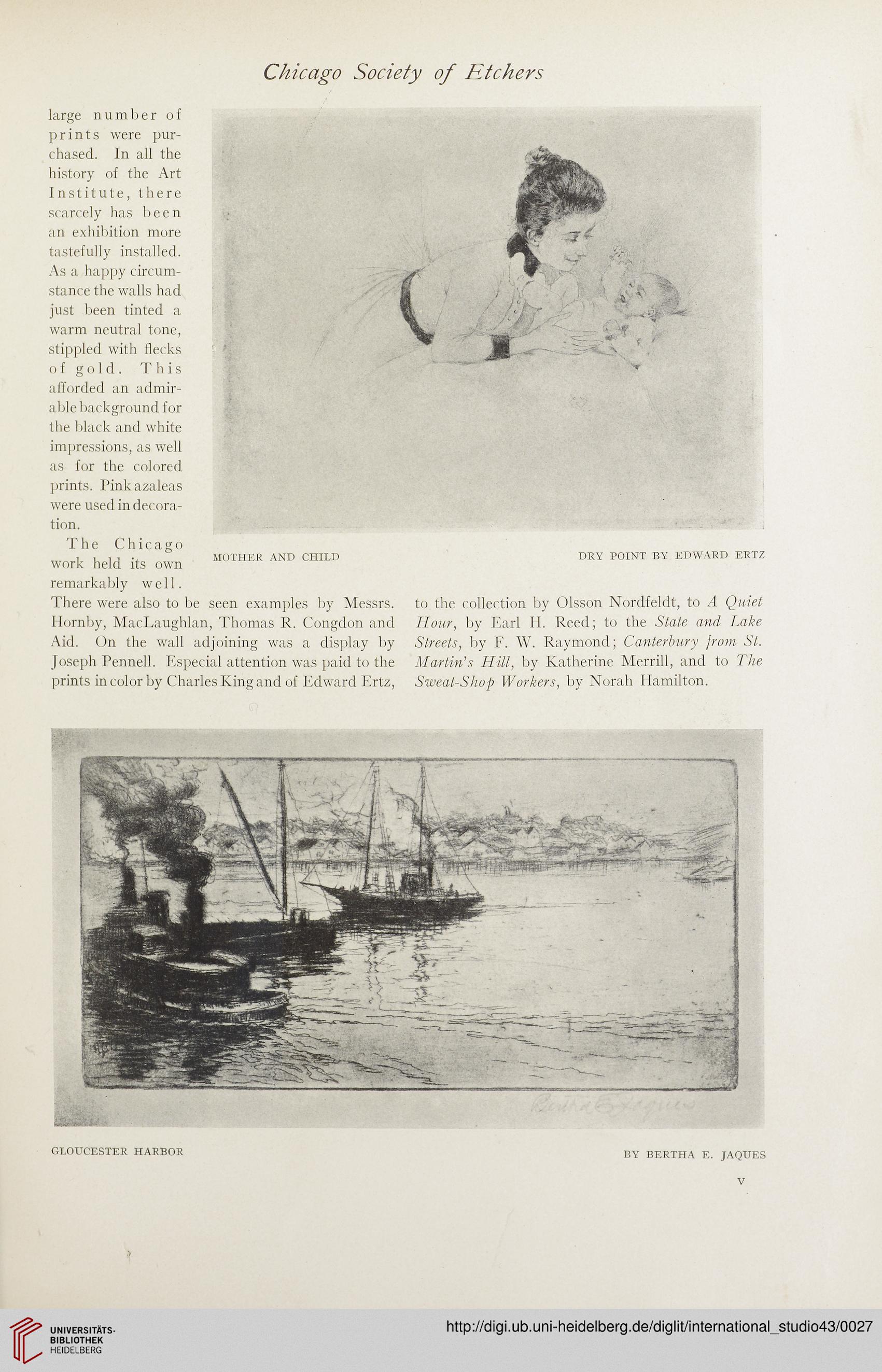Chicago Society of Etchers
large number of
prints were pur-
chased. In all the
history of the Art
Institute, there
scarcely has been
an exhibition more
tastefully installed.
As a happy circum-
stance the walls had
just been tinted a
warm neutral tone,
stippled with flecks
of gold. This
afforded an admir-
able background for
the black and white
impressions, as well
as for the colored
prints. Pink azaleas
were used in decora-
tion.
The Chicago
work held its own
MOTHER AND CHILD
DRY POINT BY EDWARD ERTZ
remarkably well.
There were also to be seen examples by Messrs.
Hornby, MacLaughlan, Thomas R. Congdon and
Aid. On the wall adjoining was a display by
Joseph Pennell. Especial attention was paid to the
prints in color by Charles King and of Edward Ertz,
to the collection by Olsson Nordfeldt, to A Quiet
Hour, by Earl H. Reed; to the State and. Lake
Streets, by F. W. Raymond; Canterbury jrorn St.
Martin’s Hill, by Katherine Merrill, and to The
Sweat-Sliop Workers, by Norah Hamilton.
GLOUCESTER HARBOR
BY BERTHA E. JAQUES
large number of
prints were pur-
chased. In all the
history of the Art
Institute, there
scarcely has been
an exhibition more
tastefully installed.
As a happy circum-
stance the walls had
just been tinted a
warm neutral tone,
stippled with flecks
of gold. This
afforded an admir-
able background for
the black and white
impressions, as well
as for the colored
prints. Pink azaleas
were used in decora-
tion.
The Chicago
work held its own
MOTHER AND CHILD
DRY POINT BY EDWARD ERTZ
remarkably well.
There were also to be seen examples by Messrs.
Hornby, MacLaughlan, Thomas R. Congdon and
Aid. On the wall adjoining was a display by
Joseph Pennell. Especial attention was paid to the
prints in color by Charles King and of Edward Ertz,
to the collection by Olsson Nordfeldt, to A Quiet
Hour, by Earl H. Reed; to the State and. Lake
Streets, by F. W. Raymond; Canterbury jrorn St.
Martin’s Hill, by Katherine Merrill, and to The
Sweat-Sliop Workers, by Norah Hamilton.
GLOUCESTER HARBOR
BY BERTHA E. JAQUES




